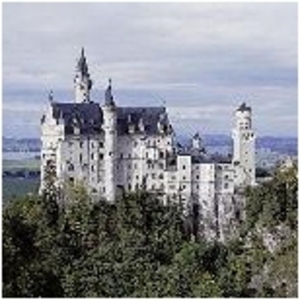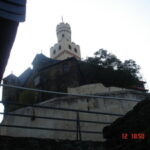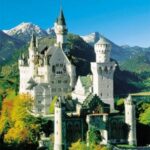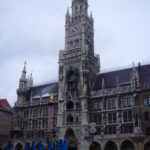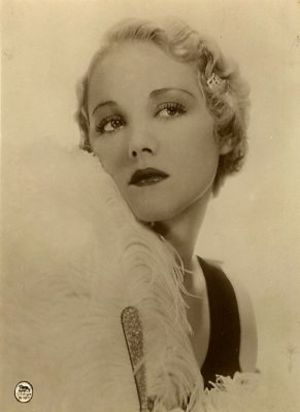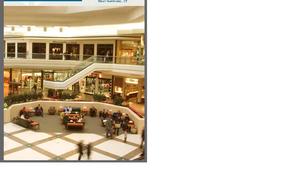While my family lived in Germany, we tried to learn as much as we could about the people, the culture, and the country. We explored everything from the delicious foods and wines to the stunning countryside and the majestic castles.
One of our favorite castles was that of Neuschwanstein, located in the beautiful Bavarian Alps. Most people are aware that this is the castle that inspired Walt Disney’s Cinderella castle.
Neuschwanstein was built by one of Germany’s most enigmatic and controversial figures; that of King Ludwig II of Bavaria. For more information on Ludwig, see my separate article about this unfortunate monarch.
Ludwig was prone to flights of fancy and grand extravagant castles. He had planned on building four – – Newschwanstein, Linderhof, Herrenchiemsee, and Falkenstein. However, the fourth castle, Falkenstein, was never built.
The idea of the medieval castle that would become Neuschwanstein came to Ludwig while he was still a child. His father had destroyed the original castle and rebuilt his own on the same spot. Ludwig, however, yearned to rebuild the original Schwanstein (stone swan), which had once been the home of the Knights of Schwangau.
However, the castle would turn out to be much more than young Ludwig had pictured in his mind’s eyes. By the time he was prepared to start construction, he had visited many different sites that he somehow wanted to incorporate into his new palace.
Ultimately, what Ludwig built was a medieval castle that incorporated the most modern services of the king’s time. It turned out to be a unique combination of both nostalgia and new technology.
The large single paned windows and the sliding glass door that led to the gardens was far in advance of anything else built at that time. The rooms had hot air heating. Running water was available on all four floors.
The toilets had an automatic flushing system. An electric bell system allowed the king and his visitors to contact servants from anywhere within the castle. The top two floors even featured telephones.
The kitchen was unusually modern with two automatic grills and a huge cast iron stove. Meals were delivered to the various floors via a lift system.
The latest technology was also used for the construction process. Construction cranes were driven by steam engines. The two-story throne room even incorporated steel construction.
The castle included the king’s palace, rooms for his guests (of which he had few), a house for the knights, and an entrance building. Although early plans were very Neo-Gothic in design, subsequent drawings were much more in line with what Ludwig wanted a Romanesque castle that would be befitting of a seeker of the Holy Grail.
Everything within the castle had to be true to the period and to Ludwig’s vision; from the paintings on the walls to the furnishings. Painters of the many scenes throughout the castle were required to have studied the historical subjects that were to be pictured. They also had to have a background in medieval poetry since everything was based upon the medieval legends that composer Richard Wagner used as the inspiration for his compositions.
These pictures often dealt with subjects such as love and guilt, repentance and salvation. They featured kings and queens, knights and their ladies, poets and lovers. The swan, Ludwig’s symbol, was often incorporated into everything from paintings to sculptures, carvings, and more.
The only room in the castle that remained true to the original Neo-Gothic design of the original architect, was that of the bedchamber. Every other room became Neo-Romanesque with rounded archways, towers, and columns to bow windows and spires.
To oversee every aspect of the construction, Ludwig took up residence on the second floor of the castle. He was eventually imprisoned there for a short time after his government had him declared insane and removed him from power.
The castle had four floors. The bottom floor was home to the servant’s quarters, where anywhere from 10 to 15 servants could be located. The second floor was to eventually include an Arab room, more servant’s quarters, and a large bath area. Unfortunately, these were not completed because the king died just days after being declared insane.
A spiral staircase in the north tower connected the first floor to the third and fourth floors. The throne room could be accessed from there. It incorporated Byzantine architecture, very reminiscent of churches of that era. It was supposedly based on the Munich All Saints Church and that of St Sophia in Constantinople. However, no throne would ever be placed there since the king was deposed before that could happen.
The third floor contained the royal rooms, which included a waiting area, a separate dining area, his bedchamber and a small chapel area. Furniture was also made from oak and fabrics for the bed and windows were made from the most luxurious brocades and tapestries imaginable.
The bedchamber retained the Neo-Gothic design as originated and was dedicated to the epic poem of Tristan and Isolde as told by German poet Gottfried von Strassburg. Accessible from there was a small chapel for the king’s private use. The large chapel was never completed within the castle.
Also accessible from there was the king’s salon and dressing areas. They, too, were resplendent in rich oaks, vibrant brocades, sumptuous silks, and amazing tapestries.
Also located on the third floor was a most unusual room called the grotto? With the doors closed, it appears to be a natural cave. However, located inside was a waterfall with colored lights? From there a glass door slid open to the conservatory, which featured huge glass windowpanes that provided a staggering view of the Bavarian Alps.
The spiral staircase continues to the fourth floor that features the great hall, which included the singer’s hall; neither of which was formally used by the king.
While Ludwig’s life was less than perfect, with parents who ignored him and a government who wanted him gone from the moment he ascended the throne, he still left behind an amazing legacy. His castles are among the most beautiful in the world. And Neuschwanstein, his crowning jewel, earned him a place in the memories of humankind for centuries to come.
Reference:
- The book entitled Royal Palaces of the World was used as a reference.
